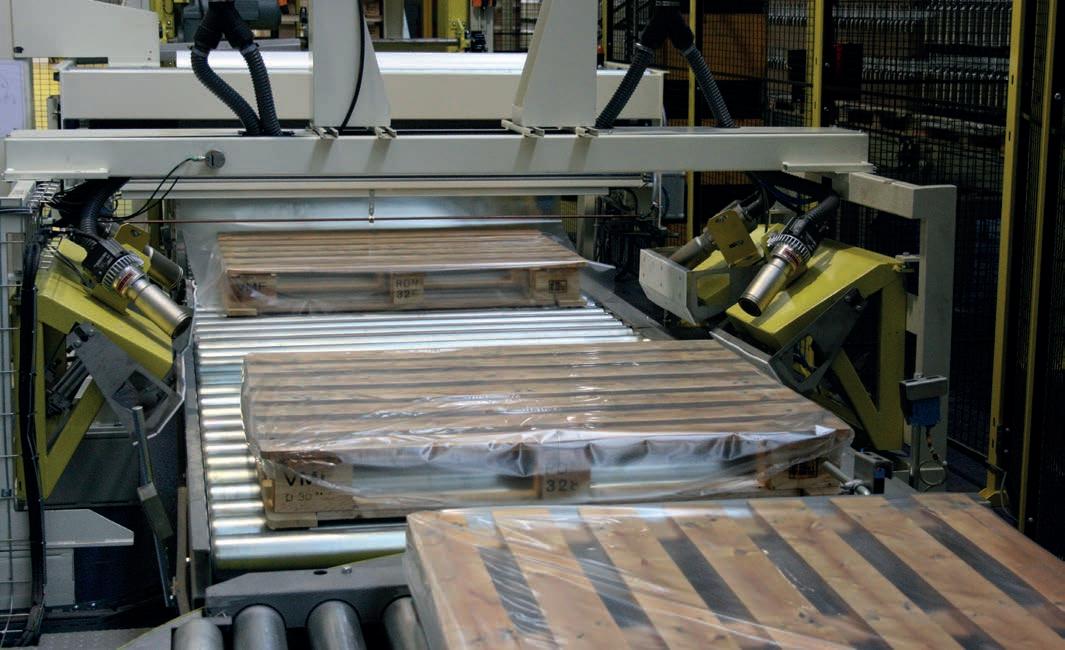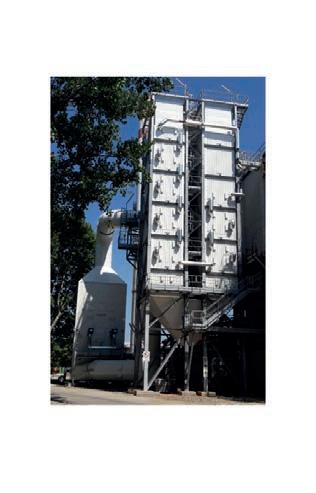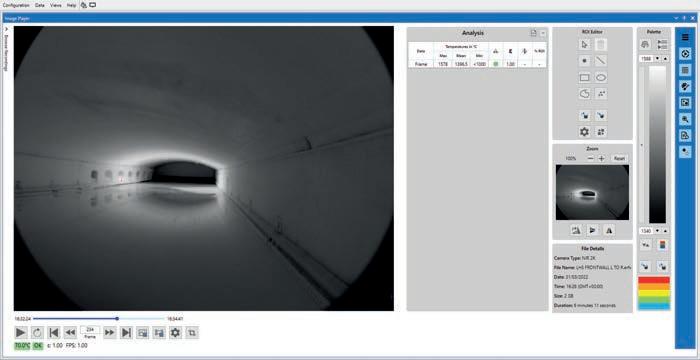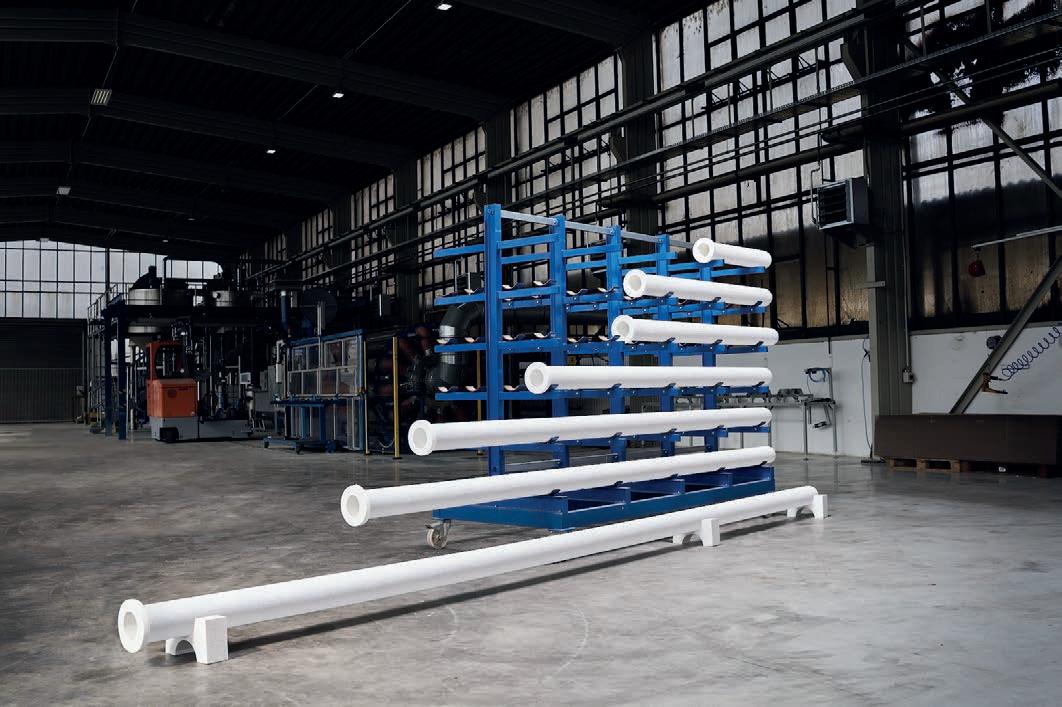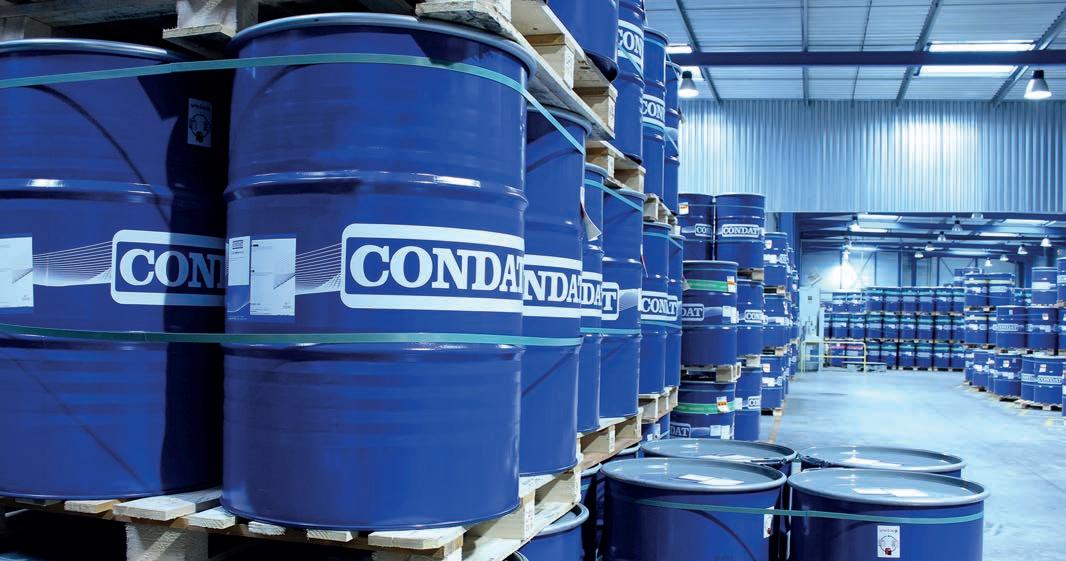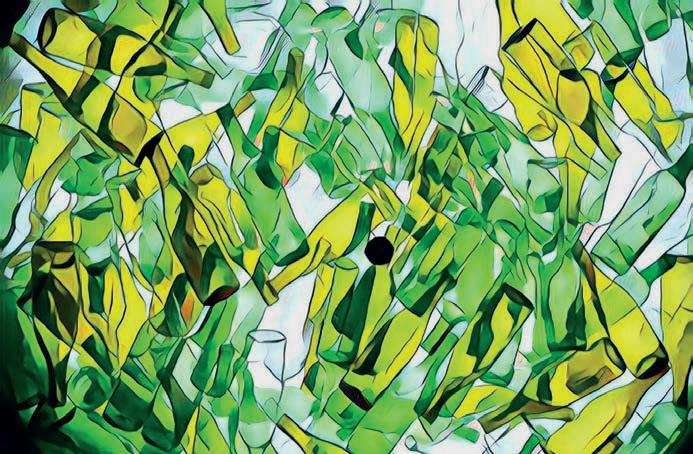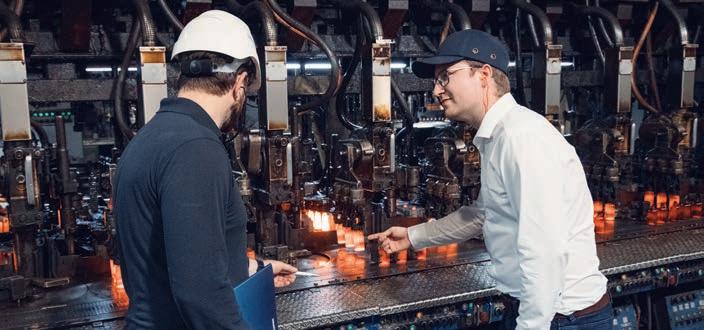
9 minute read
Digital glassmaking: Stoelzle
The Stoelzle Glass Group, with headquarters in K flach, Austria, is a trailblazer when putting sustainability agendas into practice.
“If you want to survive on the market, you have to demonstrably improve your environmental performance – for example, by reducing energy consumption and carbon emissions,” says its CEO Georg Feith. Stoelzle’s plans for its seven global production sites and its annual output of around 3.8 billion bottles is a 20% reduction in power consumption, an initial 50% reduction in carbon emissions by 2030, and finally, carbon-neutral glass production by 2050.
The well-known frame of reference for measuring this across industries is Scope 1, 2, and 3. The ‘corporate carbon footprint’ encompasses all the emissions generated by a company’s activities in one year, and the goal is a reduced carbon footprint. The ‘product carbon footprint’ alone encompasses all the emissions generated by one unit of a product across the entire value chain and throughout its entire lifecycle.
If we look at current practices, there’s a slight shift in priorities underway. availability plays a role,” Feith explains, although he also notes that a 10% increase in the use of cullet reduces carbon by about 5% and energy consumption by 3%. The CEO is considering a conversion to green electricity and alternative fuels. “The infrastructure for green fuels like hydrogen still isn’t there. Hydrogen first has to be produced, and this has to be done using solar or wind energy if it’s going to be green.”
The strategic challenges at the company’s management level are directly reflected in the factories. Taking a sustainable approach, Stoelzle created the new position of a group-wide Energy Manager in autumn 2020. Since then, it’s been Alexander Roschitz’s job to translate major guidelines into concrete actions. “We recognised early on that we needed an energy management system on the group level. There were metering points but not enough, and none that were interconnected – neither in the individual factories nor across factories.” Typically, colleagues manually combined measured values on an Excel spreadsheet and drew decentralised conclusions from this data. “There were no standardised KPIs, nor could they be automatically
calculated,” says Roschitz about the initial situation. “Due to the ever-stronger connection between IT and OT, a uniform strategy for the infrastructure of all the factories had to be developed.” Thomas Mayrold knows what that means on-site in a factory like K flach. He’s been Energy Manager at headquarters for approx. four years. “At that time, it was impossible to link energy and production data,” says Mayrold. “In general, it was extremely difficult to identify correlations using data. For example, how do we determine what amount of energy is needed to produce one tonne of glass ” But we already knew the energy-intensive areas: furnace, feeder, and annealing lehr.
“Everyone knows that the whole industry wants to reduce its energy costs sooner rather than later. They used to make up about 10% of our operating costs, but in the current situation they’re up to 30%,” says Feith, and highlights yet another challenge: “Using the latest technologies, furnaces the size of ours need gas.” A lot of effort is also being invested in the area of recycling and raw material substitution, where Feith sees potential energy savings of about 10%. “Depending on the colour of the glass, the desired haptics, and the weight, however, everyone hits natural limits when it comes to recycling, and when carbon-neutral secondary raw materials like process soda are used,

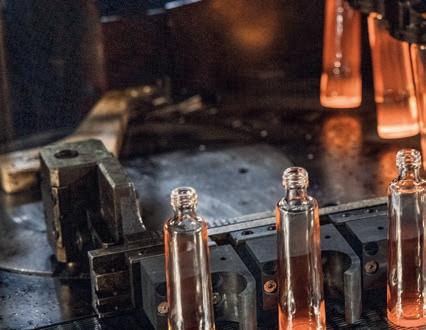
Procedure
Stoelzle decided to bring Siemens on board at the beginning of 2020. In joint workshops, energy-efficiency and carbonrelated KPIs were developed and the most relevant potential savings prioritised. A metering concept was then developed and the overall requirements for an energy management system were translated into a call for bids –based on the premise that all these actions contribute to an energy policy for the entire group and fit into the overall sustainability concept. This concept stipulates prioritised fields of activity that systematically bring Stoelzle closer to achieving its energy-efficiency and carbon goals: process and energy
Where the glass is always greener
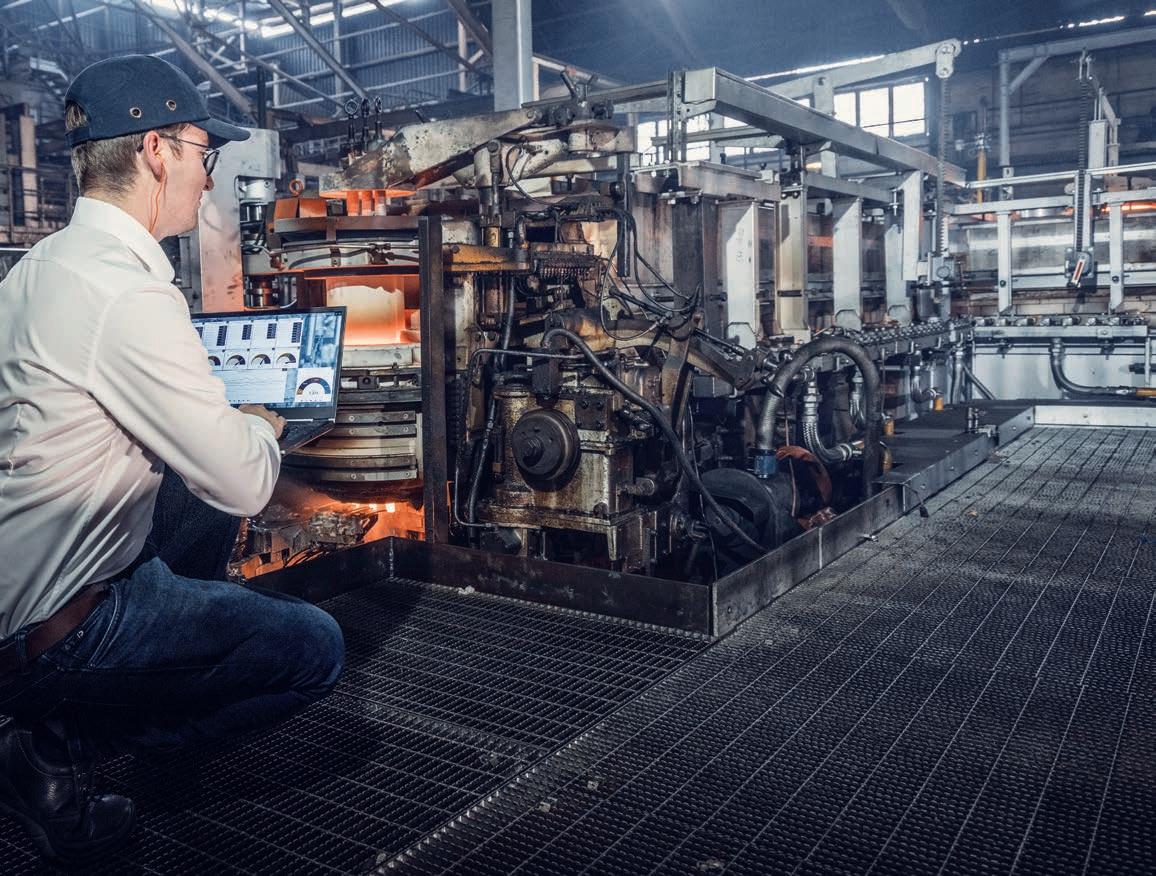
Stoelzle Glass Group plan to reduce energy consumption at its seven production sites by 20% and cut its carbon emissions in half by 2030. The centerpiece of this is an energy management system from Siemens which is responsible for up to 5% of its energy savings. Rudolf Traxler* discusses.
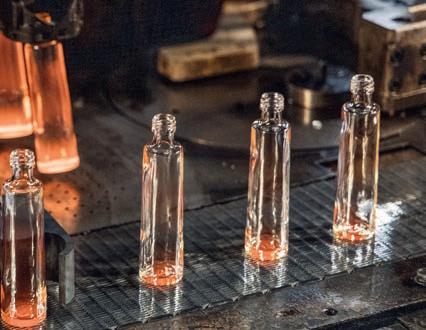
optimization, PCR and raw material substitution, and green electricity and sustainable fuels. As a key project for process and energy optimisation, management at Stoelzle identified the rapid introduction of an appropriate power monitoring and management system.
Goals
In its selection and implementation of an energy data management system, Stoelzle combined a range of objectives: “What we needed was software that could be used group-wide for acquiring, recording, and evaluating data and for visualizing it in a variety of ways and deriving actions,” says Roschitz.
“We can draw the right conclusions much more reliably on the basis of data – for example, we can identify process deviations because we’re making energy consumption transparent. That’s extremely interesting for us, because Stoelzle always has two factories with the same portfolio,” says Roschitz. The overriding objectives are always to improve energy efficiency and reduce energy costs. In concrete terms, improving energy efficiency means being able to identify inefficiencies and deviations early on and track and evaluate trends and changes in energy consumption. “It could be that the production volume is being increased, furnaces are aging, or the composition of the batch is changing. With the software, corresponding measures can be defined and implemented and their effect can also be measured,” Mayrold explains.
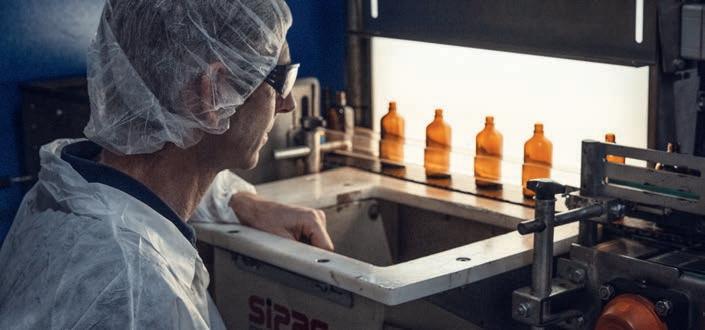
Requirements
When examined more closely, the requirements Stoelzle defined for the software can be boiled down to four quality characteristics: transparency, data quality, standardisation, and reporting. The following goals were specifically linked to these characteristics:
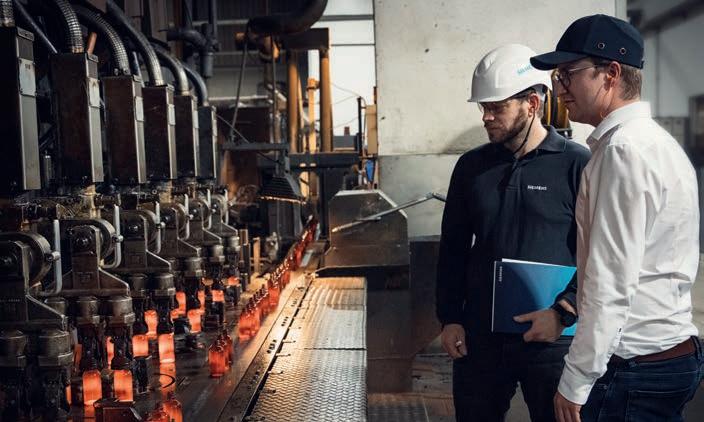
Transparency: Full transparency of all energy data, meaning gas, electricity, CO2, water, and compressed air on different aggregation levels including machine plant, line, factory, and even group. In particular, making carbon emissions transparent is essential for certificate management. The goal is to reliably determine what’s influencing energy consumption.
Data quality and standardisation: KPIs define and identify standardised comparability and tracking. They’re the only way to establish benchmarks and the only way factories can learn from one another. With high-quality valid data, it’s also much easier to prove and uniformly document compliance with all the relevant statutory regulations.
Reporting: What’s needed is a more detailed analysis and the elimination of time-consuming manual evaluations. The goal is a standardised, flexible, needsbased presentation with reports that are harmonised factory-wide and even groupwide. This is the only way to link energy and production data and make this data usable for controlling (for example, energy balance, cost center accounting, verification of energy bills, evaluation of energy and CO2 KPIs, and tracking of energy-efficiency measures).
olution an customer enefits
Stoelzle ultimately realised that these multifaceted requirements would be met best by the SIMATIC Energy Manager PRO energy management system from Siemens. “We chose Siemens because the company is a single-source supplier with international experience and glass expertise that was offering a turnkey solution from the field level to the management level. So we weren’t just impressed by the excellent software itself, but also by the coupling of hardware expertise – from energy meters, process instrumentation, and automation and communication components to a groupwide energy management system,” says Roschitz.
Since the project was launched in early 2021, all seven factories have been taking steps to connect to the energy management system, with the K flach site leading the way. By the end of 2022, all the other European factories will be connected via the company-wide WAN, and the US location, which has been part of the company since March 2021, will follow in 2023.
The services provided by the Siemens team include the engineering, supply, installation, and commissioning of the electrical and non-electrical metering points and connection to SIMATIC Energy Manager PRO. For example, water metering: Siemens selected SITRANS FS clamp-on ultrasonic flow meters with non-intrusive sensors that could be installed during operation without having to cut the pipe. Another example is the vortex flow meters: Siemens chose SITRANS F 330 flow meters due to their accuracy and low pressure losses.
“Siemens also provided support for other important steps, including the initial data-point list with a target actual table – and then the connection of IT, the above-mentioned provision of meters and instrumentation, installation, and wiring,” recalls Energy Manager Mayrold about the start-up project in K flach. “Siemens managed to perform the conversion during ongoing operation brilliantly, implementing most of the metering points within eight months and almost all the data interfaces since January 2022. It’s a living system, so to a certain extent it’s never finished,” Mayrold says.
For those who love numbers: in K flach alone, 1,800 data points were integrated via seven interfaces in process and production systems and 70 new metering points were added depending on the importance of the media: gas, electricity, compressed air and water. As a result, the connection of other locations has been almost easy. “Because the data is acquired decentrally but we designed a centralised EDMS infrastructure in K flach, connecting internationally was very manageable and easily to do for a project of this size,” says Roschitz.
Because K flach was the first to use the new system, initial options for energy and process optimisation have already been verified and resulted in concrete measures: � Water: Monitoring revealed that the amount of municipal water used can be reduced by 50% at the K flach location. � Annealing lehrs: With better temperature control, the generator sets can use 20% less natural gas. � Compressed air: Thanks to the software, Stoelzle can now measure compressed air consumption at each machine and detect leaks.
Mr Feith says: “We made the right choice with Siemens, because we were impressed by the company’s turnkey solution from the field level to the management level. We’re now looking forward to the international rollout and other collaborative steps that will make Stoelzle a glass manufacturer that’s successful on the market while being verifiably energy-efficient with demonstrably low emissions.”
He is keeping a constant watch on the interconnection and expansion on all Scope levels over the next few years: Scope 1 covers direct emissions from sources owned or controlled by Stoelzle. Scope 2 covers indirect emissions from the generation of electricity, steam, heat, and cooling that Stoelzle buys and consumes.
Scope 3 is all other indirect emissions produced by Stoelzle’s value chain.
Siemens has developed SiGreen for this purpose: it’s an ecosystem-based approach for exchanging emissions data that makes it possible to exchange emissions data along the supply chain and, by making this data available in Simatic EnMPRO, combine it with the data from its own value creation to produce a true product carbon footprint.
“This also counts in Siemens’ favour: future requirements are going to be increasingly complex and interconnected, and the solutions are already available today,” says Feith. �
*Head of Software Applications, Siemens, https://www.siemens.com/global/en.html
Stoelze Glass Group, Köflach, Austria, https://www.stoelzle.com/



